|
Books Should Be Free Loyal Books Free Public Domain Audiobooks & eBook Downloads |
|
|
Books Should Be Free Loyal Books Free Public Domain Audiobooks & eBook Downloads |
|
Fiction |
|---|
|
Book type:
Sort by:
View by:
|
By: O. Henry (1862-1910) | |
|---|---|
 Options
Options
O. Henry needs no introduction of course; the man who made the short story with the surprise ending famous. These 16 stories are all wonderful examples of his word sculpting art. They include: "The Rose of Dixie"; The Third Ingredient; The Hiding of Black Bill; Schools and Schools; Thimble, Thimble; Supply and Demand; Buried Treasure; To Him Who Waits; He Also Serves; The Moment of Victory; The Head-Hunter; No Story; The Higher Pragmatism; Best-Seller; Rus in Urbe; A Poor Rule | |
By: John Bunyan | |
|---|---|
 The Holy War
The Holy War
The Holy War is perhaps John Bunyan’s second most popular work, after The Pilgrim’s Progress. It tells the story of afierce battle to take control of a city from its rightful ruler. | |
By: John Bunyan (1628-1688) | |
|---|---|
 Pilgrim's Progress in Words of One Syllable
Pilgrim's Progress in Words of One Syllable
The Pilgrim's Progress from This World to That Which Is to Come is a Christian allegory written by John Bunyan and published in February, 1678. It is regarded as one of the most significant works of religious English literature, has been translated into more than 200 languages, and has never been out of print. The author says in the preface " I have endeavored as far as possible to avoid hard and technical expressions, and I cannot but think that the mere fact of the brevity of the words must be a great attraction to beginners of all ages. | |
By: Rafael Sabatini | |
|---|---|
 The Tavern Knight
The Tavern Knight
Follow the exploits of Sir Crispin Galliard, also known as The Tavern Knight, in his defence of the King of England against Cromwell and his Puritan Entourage. | |
By: John Milton (1608-1674) | |
|---|---|
 Areopagitica
Areopagitica
A prose tract or polemic by John Milton, published November 23, 1644, at the height of the English Civil War… Milton, though a supporter of the Parliament, argued forcefully against the Licensing Order of 1643, noting that such censorship had never been a part of classical Greek and Roman society. The tract is full of biblical and classical references which Milton uses to strengthen his argument. The issue was personal for Milton as he had suffered censorship himself in his efforts to publish... | |
By: J. M. Barrie (1860-1937) | |
|---|---|
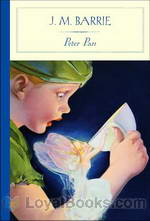 Peter Pan
Peter Pan
His name has become a metaphor for one who will never grow old. Peter Pan by JM Barrie is the story of a boy who remains a boy while the world around him changes. Sir James Mathew Barrie was a Scottish playwright and novelist whose works were received with great critical and commercial success in the late nineteenth and early twentieth century. He discovered the main inspiration for his creative genius in his friendship (and later guardianship) with the children of Arthur and Sylvia Llewellyn-Davies... | |
By: Helen Keller (1880-1968) | |
|---|---|
 The World I Live In
The World I Live In
The World I Live In by Helen Keller is a collection of essays that poignantly tells of her impressions of the world, through her sense of touch, smell, her imagination and dreams. My hand is to me what your hearing and sight together are to you. In large measure we travel the same highways, read the same books, speak the same language, yet our experiences are different. All my comings and goings turn on the hand as on a pivot. It is the hand that binds me to the world of men and women. The hand is my feeler with which I reach through isolation and darkness and seize every pleasure, every activity that my fingers encounter... | |
By: Johann Wolfgang von Goethe (1749-1832) | |
|---|---|
 The Sorrows of Young Werther
The Sorrows of Young Werther
The Sorrows of Young Werther (German, Die Leiden des jungen Werther, originally published as Die Leiden des jungen Werthers) is an epistolary and loosely autobiographical novel by Johann Wolfgang von Goethe, first published in 1774. The story follows the life and sorrows of Werther after he falls desperately in love with a young woman who is married to another. A climactic scene prominently features Goethe's own German translation of a portion of James Macpherson's Ossian cycle of poems, which had originally been presented as translations of ancient works, and was later found to have been written by Macpherson. (Introduction by Wikipedia and Barry Eads) | |
By: Hugh Lofting (1886-1947) | |
|---|---|
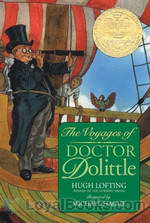 The Voyages of Doctor Dolittle
The Voyages of Doctor Dolittle
The delightfully eccentric Doctor Dolittle, rendered immortal on screen by the gifted Rex Harrison, has remained a firm favorite with generations of children ever since he made his debut in an earlier novel, The Story of Doctor Dolittle. In his second outing titledThe Voyages of Doctor Dolittle, the maverick physician takes on a new assistant, Tommy Stubbins. The story is structured as a first person account given by Tommy, who is now a very old man. The boy who was the son of the village cobbler first meets Doctor Dolittle when he takes a hurt squirrel to the doctor for treatment... | |
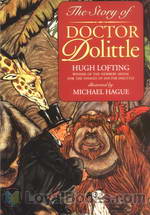 The Story of Doctor Dolittle
The Story of Doctor Dolittle
An adventurous children’s novel, The Story of Doctor Dolittle is the first book in the Doctor Dolittle series. The novel depicts the many adventures of Dr. John Dolittle as he learns the language of animals and takes on various feats including exotic travel, a dangerous encounter with pirates, and a mission to set right from wrong. The novel begins with the introduction of Dr. John Dolittle, an animal lover and respected physician, who lives in the small English town of Puddleby-on-the-Marsh with his unmarried sister... | |
By: D. H. Lawrence (1885-1930) | |
|---|---|
 The Rainbow
The Rainbow
Set against the backdrop of a rapidly industrializing England, the bewildering shift in social structure, the fading away of traditions and the advent of new ways of life, The Rainbow by DH Lawrence depicts how one family's story becomes the story of a society. Originally planned as a novel titled The Sisters, Lawrence finally split the theme into two separate novels after many revisions and rewrites. The Rainbow is the first novel in the Brangwen family saga. Tom Brangwen is a small time farmer in rural Nottinghamshire... | |
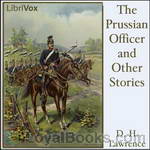 The Prussian Officer and Other Stories
The Prussian Officer and Other Stories
The collection of short stories – of which The Prussian Officer is one – was Lawrence’s first such book. A German officer and his orderly are the focus of the piece and, while socially the superior of his orderly, the officer demonstrates his is the distinctly baser character. (Introduction by Cathy Barratt) | |
By: Zane Grey (1872-1939) | |
|---|---|
 The Last of the Plainsmen
The Last of the Plainsmen
Travel along as Mike Vendetti aka miketheauctioneer narrates an outstanding true account of a trip made in 1909 by Zane Grey and a plainsman, Buffalo Jones, through the Grand Canyon to lasso a cougar. That’s right lasso. Throw a rope around. That’s equivalent to catching one by the tail. As I narrated this book, I found fact to be as exciting as fiction. This part of the west was relatively wild and untamed at this time. Wolves, wild horses, buffalo and other wildlife were quite prevalent, and the Indians were not that friendly... | |
 The Shortstop
The Shortstop
Zane Grey (Pearl Zane Gray) born in 1872 in Zanesville, Ohio was best known for his western stories, most notably Riders Of The Purple Sage which has been filmed four times, the last in 1996 starring Ed Harris and Amy Madigan. Among his other interests was baseball. He attended the University of Pennsylvania on a baseball scholarship where he earned a degree in dentistry. Grey later played minor league baseball with a team in Wheeling, West Virginia. According to the Internet Movie Data Base he is credited with 110 films made from his stories and books... | |
 The Spirit of the Border
The Spirit of the Border
This is an early novel by the phenomenally successful author of frontier, western and sports stories. It deals with historical characters and incidents in the Ohio Valley in the late 18th century, especially with the foundation of Gnaddenhutten, a missionary village intended to bring Christianity to the Indians of Ohio, despite the violent opposition of both Indians and white renegades. This turbulent adventure romance features the heroics of a semi-legendary frontiersman, Lewis Wetzel, who attempts to protect the settlers from hostile Native Americans and the vicious white outlaws the Girty brothers. (Introduction by Leonard Wilson) | |
 Call Of The Canyon
Call Of The Canyon
Glenn Kilbourne returns from the war and travels to Arizona to regain his health. There he is nursed back to health by an Arizona girl, Flo Hutter Kilbourne's fiancée, Carley Burch arrives in Arizona but soon becomes disillusioned with life in the West and returns to New York. Carley soon learns that life in the Big City is not what she really wants. Should she return to Arizaona? Will Glen still love Her? Not only a great love story, Grey, as usual, describes the environment in all its glory. | |
 Rainbow Trail
Rainbow Trail
The Rainbow Trail is a sequel to The Riders of the Purple Sage. Both novels are notable for their protagonists' mild opposition to Mormon polygamy, but in The Rainbow Trail this theme is treated more explicitly. The plots of both books revolve around the victimization of women in the Mormon culture: events in Riders of the Purple Sage are centered on the struggle of a Mormon woman who sacrifices her wealth and social status to avoid becoming a junior wife of the head of a local church, while The Rainbow Trail contrasts the older Mormons with the rising generation of Mormon women who will not tolerate polygamy and Mormon men who do not seek it. | |
By: Howard Pyle | |
|---|---|
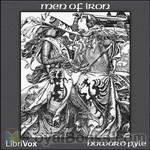 Men of Iron
Men of Iron
Men of Iron by Howard Pyle is historical fiction that transports us back to the 1400’s, a time of knighthood and chivalry. Myles Falworth is eight years old when news comes they must flee their home. His blind father is accused of treason. We see Myles grow up, train as a knight, and with perseverance, clear his father of any wrong-doing and restore their family name. | |
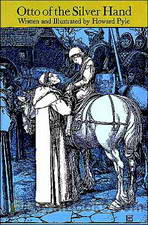 Otto of the Silver Hand
Otto of the Silver Hand
The story of little Otto, a gentle, peace-loving child born into the heart of turmoil and strife in the castle of a feuding robber baron in medieval Germany. (Summary by Arctura) | |
 Howard Pyle's Book of Pirates
Howard Pyle's Book of Pirates
Swashbuckling tales of legendary pirates, buccaneers, and marooners, terrors of the Spanish Main. | |
 The Garden Behind the Moon: A Real Story of the Moon Angel
The Garden Behind the Moon: A Real Story of the Moon Angel
David goes on a journey to the moon-garden where everything is beautiful and where he also meets Phyllis who is not like the other children in the garden. While he is allowed to play in this beautiful place for awhile, he at last finds out that he has been brought there to reveal his true mission, which is to find the Wonder-Box and the Know-All Book that is hidden in the Iron Castle and bring them back to earth. In order to find the Iron Castle, he must first find and tame the Black Winged Horse. Will he be able to succeed at the task given him? (Summary by Laura Victoria) | |
By: Andrew Lang (1844-1912) | |
|---|---|
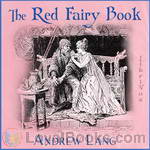 The Red Fairy Book
The Red Fairy Book
The Red Fairy Book is the second in a series of twelve books known as Andrew Lang’s Fairy Books or Andrew Lang’s “Coloured” Books. The series was immensely popular and proved of great influence in children’s literature, increasing the popularity of fairy tales over tales of real life. | |
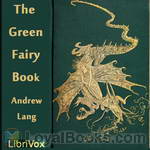 The Green Fairy Book
The Green Fairy Book
Andrew Lang's Fairy Books or Andrew Lang's "Coloured" Fairy Books constitute a twelve-book series of fairy tale collections. Although Andrew Lang did not collect the stories himself from the oral tradition, the extent of his sources, who had collected them originally (with the notable exception of Madame d'Aulnoy), made them an immensely influential collection, especially as he used foreign-language sources, giving many of these tales their first appearance in English. As acknowledged in the prefaces, although Lang himself made most of the selections, his wife and other translators did a large portion of the translating and telling of the actual stories... | |
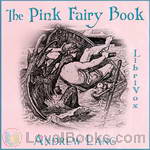 The Pink Fairy Book
The Pink Fairy Book
All people in the world tell nursery tales to their children, and the stories are apt to be like each other everywhere. A child who has read the Blue and Red and Yellow Fairy Books will find some old friends with new faces in the Pink Fairy Book. Courage, youth, beauty, kindness, have many trials, but they always win the battle; while witches, giants, unfriendly cruel people, are on the losing hand. So it ought to be, and so, on the whole, it is and will be; and that is all the moral of fairy tales... | |
 The Grey Fairy Book
The Grey Fairy Book
The tales in the Grey Fairy Book are derived from many countries—Lithuania, various parts of Africa, Germany, France, Greece, and other regions of the world. They have been translated and adapted by Mrs. Dent, Mrs. Lang, Miss Eleanor Sellar, Miss Blackley, and Miss hang. 'The Three Sons of Hali' is from the last century 'Cabinet des Fees,' a very large collection. The French author may have had some Oriental original before him in parts; at all events he copied the Eastern method of putting tale within tale, like the Eastern balls of carved ivory... | |
 HE
HE
This book is a parody of the famous swashbuckling novel, She, by H. Rider Haggard. Her beauties are beyond the reach of danger from Burlesque, nor does her form flit across our humble pages.” (taken from the Dedication) | |
 The Crimson Fairy Book
The Crimson Fairy Book
The Crimson Fairy Book contains thirty-six stories collected from around the world and edited by Andrew Lang. Many tales in this book are translated, or adapted, from those told by mothers and nurses in Hungary; others are familiar to Russian nurseries; the Servians are responsible for some; a rather peculiarly fanciful set of stories are adapted from the Roumanians; others are from the Baltic shores; others from sunny Sicily; a few are from Finland, and Iceland, and Japan, and Tunis, and Portugal... | |
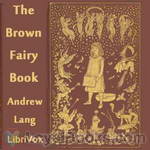 The Brown Fairy Book
The Brown Fairy Book
Andrew Lang’s Brown Fairy Book (1904) was a beautifully produced and illustrated edition of fairy tales that has become a classic. This was one of many other collections of fairy tales, collectively known as Andrew Lang’s Fairy Books. | |
 Violet Fairy Book
Violet Fairy Book
Andrew Lang’s Violet Fairy Book (1901) was a beautifully produced and illustrated edition of fairy tales that has become a classic. This was one of many other collections of fairy tales, collectively known as Andrew Lang’s Fairy Books. | |
 Custom and Myth
Custom and Myth
CUSTOM AND MYTHINTRODUCTION.Though some of the essays in this volume have appeared in various serials, the majority of them were written expressly for their present purpose, and they are now arranged in a designed order. During some years of study of Greek, Indian, and savage mythologies, I have become more and more impressed with a sense of the inadequacy of the prevalent method of comparative mythology. That method is based on the belief that myths are the result of a disease of language, as the pearl is the result of a disease of the oyster... | |
By: Washington Irving (1783-1859) | |
|---|---|
 The Sketch Book of Geoffrey Crayon, Gent.
The Sketch Book of Geoffrey Crayon, Gent.
Apart from "Rip Van Winkle" and "The Legend of Sleepy Hollow" - the pieces which made both Irving and The Sketch Book famous - other tales include "Roscoe", "The Broken Heart", "The Art of Book-making", "A Royal Poet", "The Spectre Bridegroom", "Westminster Abbey", "Little Britain", and "John Bull". His stories were highly influenced by German folktales, with "The Legend of Sleepy Hollow" being inspired by a folktale recorded by Karl Musaus. Stories range from the maudlin (such as "The Wife" and... | |
By: Victor Appleton (1873-1962) | |
|---|---|
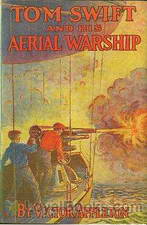 Tom Swift and His Aerial Warship, or, the Naval Terror of the Seas
Tom Swift and His Aerial Warship, or, the Naval Terror of the Seas
Tom Swift is an inventor, and these are his adventures. The locale is the little town of Shopton in upstateNew York, near Lake Carlopa. While some of Tom’s inventions are not well-founded in a scientific sense, others elaborated developments in the news and in popular magazines aimed at young science and invention enthusiasts. Presenting themselves as a forecast of future possibilities, they now and then hit close to the mark. Some predicted inventions that came true include “photo telephones”, vertical takeoff aircraft, aerial warships, giant cannons, and “wizard” cameras... | |
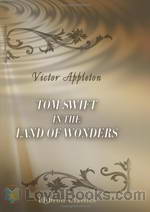 Tom Swift in the Land of Wonders
Tom Swift in the Land of Wonders
Tom Swift is the young protagonist in a series of juvenile adventure novels which began in the early twentieth century and continue to the present. Tom Swift is a genius inventor whose breakthroughs in technology (especially transport technology) drive the plots of the novels, placing them in a genre sometimes called “invention fiction” or “Edisonade”. This book is the 20th in the original series published from 1910 -1942, written by a ghost writer using the name of Victor Appleton. This adventure takes Tom and his cohorts to Honduras in search of a Mayan idol of gold. | |
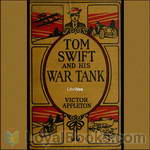 Tom Swift and His War Tank
Tom Swift and His War Tank
Tom Swift, that prolific youthful inventor, is engaged in trying to help the Allies win WWI. After reading newspaper accounts of the British tanks, Tom takes a sheet of paper and sets out to design a better one from scratch. And fortunately, he can throw the whole family business behind his venture. He has two problems: First, his friends and acquaintances are questioning his patriotism because he hasn’t enlisted as a rifleman for the front lines. Even his girl is worried his blood isn’t true-blue... | |
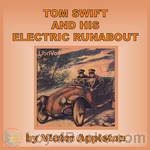 Tom Swift and his Electric Runabout
Tom Swift and his Electric Runabout
Tom Swift enters an upcoming race with his specially-designed prototype electric race car. But as he makes the final preparations and adjustments, days before the race, he discovers a plot that would bankrupt not only his family, but also everyone else that relies on the local bank (which is the target of a nefarious bank-run scheme). Tom must solve the mystery and stop the criminals behind the plot before he’ll test himself on a 500 mile race against some of the best electric cars and skilled drivers in the United States... | |
 Tom Swift and the Electronic Hydrolung
Tom Swift and the Electronic Hydrolung
The US Government is very smartly letting Tom Swift Jr. handle the recovery of its probe to Jupiter. But a mystery missile suddenly intercepts the probe and splashes it in the South Atlantic.Faced with a huge search task to find the probe on the ocean bottom, Tom soon realizes that the same shadowy group that attacked the probe is competing to find it, and no holds are barred: kidnap, coercion, and lethal force are all in play.Under such circumstances, what can Tom do? What he does every time, of course! He invents some utterly cool device to get the job done! And his Electronic Hydrolung is just the beginning! | |
 Tom Swift and His Big Tunnel
Tom Swift and His Big Tunnel
The Titus Brothers Contractors company have won a government contract in Peru to blast a tunnel through a mountain and connect two isolated railroad lines. The deadline is approaching, and the contractors have hit a literal wall: excessively hard rock which defies conventional blasting techniques. The company is under pressure to finish, or else the contract will default to their rivals, Blakeson & Grinder. Mr. Job Titus has heard of Tom Swift and Tom's giant cannon, which is used in protecting the Panama Canal, and wants to hire Tom to develop a special blasting powder to help them finish the excavation... | |
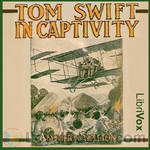 Tom Swift in Captivity
Tom Swift in Captivity
Tom Swift is approached by Mr. Preston, the owner of a circus, and begins to tell the story of Jake Poddington, Mr. Preston's most skilled hunter. As it turns out, Jake went missing just after sending word to Preston that Jake was on the trail of a tribe of giants, somewhere in South Africa. That was the last Preston has heard of Jake Poddington. Preston would like Tom to use one of his airships to search for Poddington, and if possible, bring back a giant for the circus.Listeners are forewarned that some elements and characters included in Tom Swift books portray certain ethnic groups in a very dated manner that modern readers, and listeners, may find offensive... | |
By: Jean Webster | |
|---|---|
 The Four-Pools Mystery
The Four-Pools Mystery
In The Four Pools Mystery the tyrannical plantation owner is deemed responsible for his own murder because of his mistreatment of the former slaves who continued in his employment after the war. Jean Webster (pseudonym for Alice Jane Chandler Webster) was born July 24, 1876 and died June 11, 1916. She was an American writer and author of many books including Daddy-Long-Legs and Dear Enemy. (Wiki) | |
 When Patty Went to College
When Patty Went to College
When Patty Went to College is Jean Webster's first novel, published in 1903. It is a humorous look at life in an all-girls college at the turn of the 20th century. Patty Wyatt, the protagonist of this story is a bright, fun loving, imperturbable girl who does not like to conform. The book describes her many escapades on campus during her senior year at college. Patty enjoys life on campus and uses her energies in playing pranks and for the entertainment of herself and her friends. An intelligent girl, she uses creative methods to study only as much as she feels necessary... | |
 Just Patty
Just Patty
Patty, Conny, and Priscilla are the best of friends, and roommates at boarding school. While the teachers might say they are mischievous, even troublemakers, Patty and her friends act only in accordance with their convictions. From forming a labor union to furnishing a house for the neighbors, Patty's ideas are unconventional, yet loads of fun. Just Patty is the prequel to When Patty Went to College, the first novel by the author of Daddy-Long-Legs and Dear Enemy. | |
 Jerry
Jerry
Jerry is the humorous story of a young man's attempt to win his lady. Jerry is waiting for his friends at a hotel in Italy, and is bored and lonely. When he hears that a beautiful American lady, Constance Wilder, is staying nearby, he tries to visit her. After an awkward first meeting, he tries to catch her attention by pretending to be a peasant tour guide. She recognizes him for what he is, but pretends not to, and a lively charade is carried on as they tease and fall in love. A clean, sweet, funny historical fiction/romance. | |
By: Ralph Waldo Emerson | |
|---|---|
 Essays, Second Series
Essays, Second Series
Ralph Waldo Emerson (1803 – 1882) was an American essayist, philosopher, and poet, best remembered for leading the Transcendentalist movement of the mid 19th century. His teachings directly influenced the growing New Thought movement of the mid-1800s. | |
By: Maurice Leblanc (1864-1941) | |
|---|---|
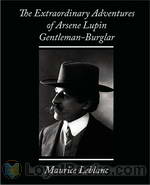 The Extraordinary Adventures of Arsène Lupin, Gentleman-Burglar
The Extraordinary Adventures of Arsène Lupin, Gentleman-Burglar
Two writers, famous in their own countries for creating immortal characters: Sir Arthur Conan Doyle in England and Maurice Leblanc in France. Their literary creations, Sherlock Holmes and Arsene Lupin are at two ends of the criminal spectrum. Holmes is a sleuth while Lupin is a burglar. When Maurice Leblanc introduces Sherlock Holmes in one of his Arsene Lupin stories, Conan Doyle is outraged. He sues Leblanc, who promptly changes the character's name to “Herlock Sholmes” and continues featuring... | |
 The Hollow Needle: Further Adventures of Arsène Lupin
The Hollow Needle: Further Adventures of Arsène Lupin
Arsène Lupin returns in a wonderful story of disguises, love, and of course treasure. Once again, Lupin crosses paths with the famous Holmlock Shears. But this time Arsène matches wits with Isidore Beautrelet, Sixth-form Schoolboy. Every step that Lupin takes has Beautrelet right on his heels. Has Lupin finally met his match? Will Beautrelet discover the secret of the Hollow Needle? And has the gentleman burglar met another match as well, one who will lead him away from his life of crime forever? | |
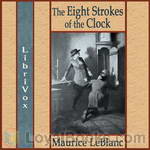 The Eight Strokes of the Clock
The Eight Strokes of the Clock
The Eight Strokes of the Clock is a collection of eight short stories by Maurice Leblanc. The stories have his most famous creation, Arsène Lupin, gentleman-thief, as main character. The eight stories, even though independent, have a leading thread: Lupin, under the name of Serge Rénine, trying to conquer the heart of a young lady, travels with her, solving eight mysteries on the way. | |
 The Confessions of Arsene Lupin
The Confessions of Arsene Lupin
A collection of nine stories - or confessions - of the celebrated gentleman thief Arsene Lupin | |
By: Founding Fathers of the United States | |
|---|---|
 The Declaration of Independence of the United States of America
The Declaration of Independence of the United States of America
Declaration of Independence is the document in which the Thirteen Colonies declared themselves independent of the Kingdom of Great Britain and explained their justifications for doing so. It was ratified by the Continental Congress on July 4, 1776. | |
By: Ayn Rand (1905-1982) | |
|---|---|
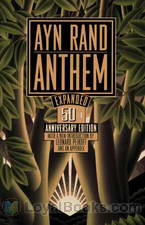 Anthem
Anthem
The title 'Anthem' is derived as an anthem to sense of self and self-governing thoughts. Anthem is a story of Equality 7-2521 who is a young man living in some unspecified future time and place. In this future era freedom and individual rights have been eradicated. The starring character of the novel is an inquisitive street cleaner. He lives in a society where people have lost their knowledge of individualism, to the extreme that people do not know words like 'I' or 'mine'. All the people live and work for their livelihood in collective groups, along with the people with power, namely the 'Councils'... | |
By: Johanna Spyri (1827-1901) | |
|---|---|
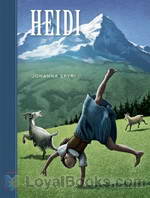 Heidi
Heidi
Filled with descriptions of the magnificent Swiss Alps, the lives of the simple country folk who live in their picturesque peaks and valleys and the gentle and innocent days of childhood, Heidi by Johanna Spyri is a book that no child should miss reading. Since it first came out, it has captured the hearts of children (and adults) all over the world, been extensively filmed, televised and staged and translated from the original German into more than 60 languages. Heidiland, a theme park, is one of the big attractions in Zurich... | |
 Heidi (version 2 dramatic reading)
Heidi (version 2 dramatic reading)
"Heidi" takes us on a journey to the eventful childhood of a good-hearted girl from the Swiss Alps. A warm and loving story, full of touching moments, it reaches children and adults alike. It was written in 1880 and published in two parts: 1. Heidi's years of learning and travel. 2. Heidi makes use of what she has learned. This English translation from 1915 has "an especial flavor, that very quality of delight in mountain scenes, in mountain people and in child life generally, which is one of the chief merits of the German original... | |
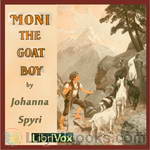 Moni the Goat-Boy
Moni the Goat-Boy
Moni is the goat boy who takes care of all the goats belonging to the people of Fideris, Switzerland. He loves to sing, yodel, and whistle while he romps with the goats all day long on the mountains. His favorite is a young kid named Mäggerli. One day Moni comes across a serious situation where he must keep a deceitful secret in order to protect Mäggerli from being killed. Will Moni risk the life of Mäggerli and tell the truth? This delightful short story teaches children that to trust God and do right is always better than being deceitful. | |
By: L. Leslie Brooke (1862-1940) | |
|---|---|
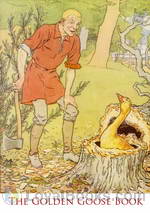 The Golden Goose Book
The Golden Goose Book
A charming little book full of the most gorgeous illustrations. We see a number of stories in which kindness is rewarded and selfishness is punished but Brooke squeezes a number of intriguing and quite bizarre twists and turns into the story so it is not nearly so predictable as you might imagine. Victorian moral fairy tales from a delightfully inventive mind. | |
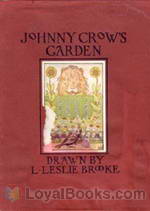 Johnny Crow's Garden
Johnny Crow's Garden
A beautifully illustrated children’s picture book featuring Johnny Crow who made a garden in which a variety of animals do bizarre things in rhyme. | |
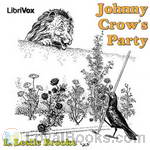 Johnny Crow's Party
Johnny Crow's Party
A beautifully illustrated children’s picture book. Listen to the narration while you read along viewing a variety of delightful animals doing strange things such as the kangaroo who tried to paint the roses blue. This is a follow up to Johnny Crow’s Garden. | |
By: Gene Stratton-Porter (1863-1924) | |
|---|---|
 Michael O'Halloran
Michael O'Halloran
The story of a plucky, optimistic newsboy, Michael O’Halloran, who has been orphaned from a young age and asks nothing of the world but to “Be Square!” This is a warm and joyous story of how Michael makes life sunnier for those around him, bringing joy to all who know him. | |
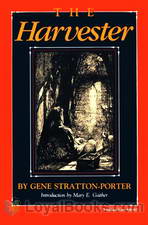 The Harvester
The Harvester
The Harvester is one of Gene Stratton-Porter’s romantic novels which combine a love of nature, high moral ideals and a good plot. This is the story of a young man who lives in the country side with his dog and other animals and grows herbs to sell to medical drug supply houses. One evening, he has a vision of his Dream Girl and this is the story of his search for her and what happens when he finds her. | |
 Freckles
Freckles
Freckles is a young man who has been raised since infancy in a Chicago orphanage. His one dream is to find a job, a place to belong and people who accept him despite his youth and the disability of having only one hand. He finds this place in the Limberlost Swamp, as Mr. McLean’s Limberlost guard of precious timber.In the process, he discovers a love for the wilderness and animals he encounters every day on his rounds and a burning desire to learn about all the new birds and plants he sees on his rounds every day... | |
 A Daughter of the Land
A Daughter of the Land
Independent Kate Bates resents the fact that, as the youngest of a large family, she is expected to stay at home and help her parents while her brothers and sisters are free to pursue their desires. When she defies her family and leaves home, she finds that the path to independence is paved with hardships. | |
 At the Foot of the Rainbow
At the Foot of the Rainbow
This story is about three people, two men and a woman. Jimmy, selfish and deceitful, who has shamelessly lied to, cheated, and used his dear friend Dannie for years. His wife Mary, who loves another. And finally Dannie himself, the patient, kind, loving and thoughtful friend of both Jimmie and Mary. He would do anything for them, but what will he do when he find out Jimmy's terrible secret? This wonderful book is full of feeling, love, sadness, and friendship. It will will make you smile, cry, and, at times, laugh. Don't miss this delightful story. | |
By: James Oliver Curwood (1878-1927) | |
|---|---|
 God's Country—And the Woman
God's Country—And the Woman
James Curwood wrote many adventures of the far north. By 1909 he had saved enough money to travel to the Canadian northwest, a trip that provided the inspiration for his wilderness adventure stories. The success of his novels afforded him the opportunity to return to the Yukon and Alaska for several months each year that allowed him to write more than thirty such books. The Canadian North is often referred to as “God’s Country” God’s Country is a tale of adventure, mystery and romance! | |
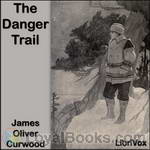 The Danger Trail
The Danger Trail
Chicago engineer Jack Howland is sent to the edge of the Canadian barren lands north of Prince Albert to establish a train route through some of the most treacherous terrain in North America. He would soon learn that it was not only the terrain that was forbidding, as he begins to understand why the previous engineers sent on the same mission had been forced to give up the task and flee back to the south. Mysterious visitors, suspicious characters, strange apparent coincidences, and one particularly mysterious girl meet Howland at every turn in this suspenseful tale of adventure, excitement, danger, and romance set in the northern Canadian wilderness. | |
 The Wolf Hunters
The Wolf Hunters
Follow Roderick and his friends Wabi and Mukoki on their adventures in the pristine North. They fight voracious wolves, hostile natives, and the vicious elements of nature, while on the hunt. Getting more than they bargained for, they discover a mysterious cabin, and stumble upon a secret that has lain hidden for half a century. Full of twists and turns, danger and suspense, The Wolf Hunters, the prequal to The Gold Hunters, is an excellent read. (Introduction by Brian Adey) | |
 Isobel
Isobel
Action, intrigue, and a touch of romance in the farthest reaches of northern Canada. Sergeant Billy MacVeigh of the Canadian Northwest Mounted, with his only partner Pelliter are the only official representatives in the lonely and desolate reaches of Point Fullerton, hundreds of miles from the next nearest outpost, and from any civilization. Both are nearing the end of their service in those regions, and their main function has been to try to find the elusive murderer Scottie Deane, and if they happen upon anybody trading in Eskimo women to haul them in also... | |
 Courage of Marge O'Doone
Courage of Marge O'Doone
David Raine is travelling, trying to escape his own memories. On the train he meets Father Rolland, who invites him North, to a world of "mystery and savage glory", to help him find himself again. On the same train, he meets a mysterious woman searching for a man named Michael O'Doone. When she's gone, he finds a thin package on her seat. It contains the photograph of a girl and David makes it his aim to find her, while following Father Rolland into the mysterious North. | |
By: Robert Michael Ballantyne (1825-1894) | |
|---|---|
 Fighting the Whales
Fighting the Whales
A fatherless boy joins the crew of a whaling ship in order to earn a living for himself and his mother. Beyond being a fascinating depiction of a now-alien time, occupation, and culture, it’s also a rousing adventure story. One is left with the impression that hunting and catching a whale in a sailing ship was akin to you or me being stalked, ambushed, and killed by a shoebox full of mice. | |
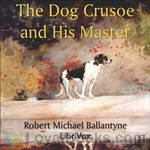 The Dog Crusoe and His Master
The Dog Crusoe and His Master
This is a story of an adventure involving a young man, his dog, and two friends. Together they wander through the Western prairies on a mission to make peace between the “pale-faces” and the “Red men”. They face many perils and become heroes many times over. This wonderful story takes the characters (and the reader) on an action-packed journey through the Western prairies during the times when relations between the white man and the Natives were not always peaceful. | |
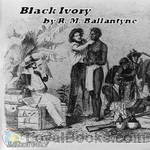 Black Ivory
Black Ivory
Although the book's title Black Ivory denotes dealing in the slave trade it is not our heroes who are doing it. At the very first chapter there is a shipwreck, which leaves the son of the charterer of the sinking ship, and a seaman friend of his, alone on the east coast of Africa, where Arab and Portuguese slave traders were still carrying out their evil trade, despite the great efforts of patrolling British warships to limit it and free the unfortunates whom they found being carried away in the Arab dhows... | |
 My Doggie and I
My Doggie and I
This story surrounds a child waif, a young woman, a young gentleman doctor, and an elderly lady. This tale unfolds the story of a bond that brings these unlikely friends together and merges their separate paths of life into one common path. The bond is "Dumps", or "Pompey", the "doggie". With many twists, turns, and uncertainties, the ending may surprise the reader. All's well that ends well in this doggie "tail". (Introduction by Allyson Hester) | |
By: Margaret Sidney (1844-1924) | |
|---|---|
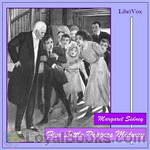 Five Little Peppers Midway
Five Little Peppers Midway
Five Little Peppers Midway is the joyous continuation of the Pepper family's story. A snooty cousin comes to stay with the Peppers, and yet even this can't dampen the joy the Pepper children feel about the wonderful prospect of Mamsie's upcoming wedding! | |
 Five Little Peppers Abroad
Five Little Peppers Abroad
This book is the next in the series of the Five Little Peppers, by Margaret Sidney, after Five Little Peppers and How They Grew and Five Little Peppers Midway. It continues the series where Ben, Polly, Joel, Davie, and Phronsie get to travel abroad in Europe! | |
 Five Little Peppers at School
Five Little Peppers at School
The Five Little Peppers are off to school - Joel and Davie at a boys' boarding school, Polly, Phronsie and Ben at home. At first the storyline shifts between the boys and the girls, until the boys come home for the holidays and all the children are caught up in plans to help the poor family of a brakeman who was killed in an accident. Meanwhile Polly struggles to keep Jasper's friend from being expelled, Phronsie has a frightening accident and Ben works hard to repay Mr. King. It's another heart-warming tale from the author of Five Little Peppers and How They Grew! | |
By: Beatrix Potter (1866-1943) | |
|---|---|
 Collection of Beatrix Potter Stories
Collection of Beatrix Potter Stories
What can we say about the delightful Beatrix Potter stories? Starting with the naughty Peter Rabbit and his mis-adventures, progressing through The Tale of Mrs. Tiggy-Winkle whose funny name is just the start of the interesting things about her, then expounding on the Tale of Jemima Puddle-Duck, and many many more, these stories are all gems of the art of story telling. This is your chance to enjoy reading them aloud and recording them for children to enjoy listening to in the years and decades to come. Aren't you curious to learn more about the Fierce Bad Rabbit? Or the Tale of the Two Bad Mice? This is your chance to read aloud. And remember to have fun !! | |
By: Mary Roberts Rinehart (1876-1958) | |
|---|---|
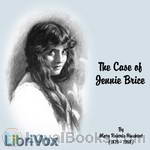 The Case of Jennie Brice
The Case of Jennie Brice
The flood brings in not only the muddy waters but a series of suspicious clues that convinced Mrs. Pitman, a boarding house keeper, that a murder has been committed at her boarding house. Jennifer Ladley aka Jennie Brice is missing and with the help of Mr. Holcombe, a quirky gentleman with a passion for mysteries, they embark on a quest for the truth behind the disappearance of Jennie Brice. | |
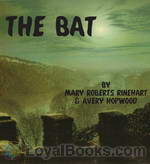 The Bat
The Bat
The novelization of the play of the same name that had an initial run of 867 shows on Broadway and has been performed all over the world and been made into three movies over a span from 1926 to 1959. An intricate mystery, with a wide cast of characters. (Summary by Alan Winterrowd) | |
 The Window at the White Cat
The Window at the White Cat
When a clumsy, well-meaning lawyer gets involved with a pair of delightful old maids and a beautiful girl, he must acquire some of the skills of his friends the detective and the newspaperman to solve the puzzle of The White Cat. That’s the name of a back-street political club serving beers, political favors and, occasionally, murder. (Introduction by Robert Keiper) | |
 The Amazing Interlude
The Amazing Interlude
It is the early days of The Great War. As the curtain rises, Sara Lee is sitting by the fire in her aunt and uncle’s home, knitting a baby afghan. Her beau’s name is Harvey. He has his eye on a little house that is just perfect for two and he will soon propose to Sara Lee. But in this play, the mise en scène is about to change. A fairyland transformation will take place and Sara Lee will step into a new and different story, where she is the princess in a forest of adventure. There is a prince, too, whose name is Henri... | |
 The Man in Lower Ten
The Man in Lower Ten
Someone had to take the bank notes to Pittsburgh and take a statement from John Gilmore confirming that they were indeed forged. It was McKnight's turn to go, but he was bagging off because he wanted to spend the weekend visiting Alison West in Richmond. And so his law partner, Lawrence Blakeley, is left with no choice but to make the trip himself. All goes well at first, but on the train home, Blakeley wakes to find that the notes, along with his clothes, are missing from his sleeping berth. It was an eventful night. In addition to the theft, there's been a murder in the berth across, and when the weapon is found under Blakeley's pillow, he becomes one of the prime suspects. | |
 The Street of Seven Stars
The Street of Seven Stars
Published in 1914, this novel tells the story of Harmony Wells, an innocent and beautiful American in Austria to study violin. Harmony has talent and she dreams of a career in music. After her friends run out of money and return to the States, Harmony stays on in hopes of earning enough money to continue her lessons. Along the way, she meets Peter Byrne, an American doctor in Vienna following his dream to study surgery. Peter is already watching over an orphan boy in a local hospital and now he takes it upon himself to protect young Harmony from the unsavory side of life in the big city... | |
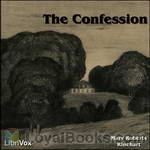 The Confession
The Confession
Mary Roberts Rinehart is claimed to have invented the "Had I but known" mystery genre. When Agnes Blakiston rented the old parsonage at Miss Emily's request she soon came to regret it. Was the house haunted? Did Miss Emily have a secret so terrible she would rather die than reveal it? To find the answers you will need to listen. | |
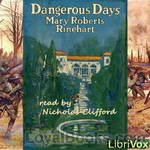 Dangerous Days
Dangerous Days
Dangerous Days opens in a still neutral America, though within a year the country will have joined the European alliance against the Central Powers in the first world war. Clayton Spencer, a successful industrialist and owner of a munitions plant, finds himself facing several problems: not only anarchism and German sabotage, but also the prospect of a deteriorating marriage, and of a son who all too often shares his mother's frivolous and essentially self-concerned point of view. How far will America's entry into the war change such views? What will it mean for Spencer, for his family, and for his business? | |
 When a Man Marries
When a Man Marries
A divorced playboy hosts a dinner party complete with a stand in wife to placate his aunt who financially supports him. When his chef is hospitalized with smallpox symptoms, the fun begins. Throw in an ex-wife, a mystery, and a little romance and you have a comedy of side splitting proportions. - | |
 Tish
Tish
The story of three "middle aged ladies". Follow along as they have all sorts of adventures. | |
 More Tish
More Tish
Mary Roberts Rinehart wrote 6 books about the elderly Letitia (Tish) Carberry and the escapades she gets her elderly lady cronies into. The series led to a 1942 movie with Marjorie Main. This particular book, the third in the series, was written after Mary's stint as a war correspondent in Belgium during the first World War. | |
By: Garrett P. Serviss (1851-1929) | |
|---|---|
 The Moon Metal
The Moon Metal
Garrett Putnam Serviss (1851-1929) was an astronomer, popularizer of astronomy, and early science fiction writer. Serviss showed a talent for explaining scientific details in a way that made them clear to the ordinary reader. Serviss’s favorite topic was astronomy, as shown by the fact that of the fifteen books he wrote, eight are devoted to that science. He unquestionably was more widely read by the public on that topic than anyone prior to his time. In his private life Serviss was an enthusiastic mountain climber, describing his reaching the summit of the Matterhorn at the age of 43 as part of an effort “to get as far away from terrestrial gravity as possible... | |
 Edison's Conquest of Mars
Edison's Conquest of Mars
Edison’s Conquest of Mars, by Garrett P. Serviss, is one of the many science fiction novels published in the nineteenth century. Although science fiction was not at the time thought of as a distinct literary genre, it was a very popular literary form, with almost every fiction magazine regularly publishing science fiction stories and novels. “Edison’s Conquest of Mars” was published in 1898 as an unauthorized sequel to H. G. Wells’s The War of the Worlds, but did not achieve the fame of its predecessor. The book was endorsed by Thomas Edison, the hero of the book — though not by Wells. | |
By: Anna Katharine Green (1846-1935) | |
|---|---|
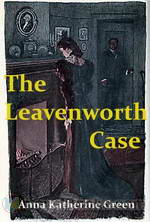 The Leavenworth Case
The Leavenworth Case
Horatio Leavenworth, an immensely wealthy bachelor, is a retired merchant who enjoys great social position and respect. His two orphan nieces, Mary and Eleanor live with him in a luxurious mansion in New York's upscale Fifth Avenue. One morning, he is found mysteriously dead in his study, shot neatly through the back of his head. His will, written some time earlier, is discovered, in which he has left his entire fortune to one of the nieces, while cutting out the other completely. The building, which had remained locked throughout the night, houses a number of servants besides the two young ladies... | |
 Initials Only
Initials Only
Anna Katharine Green (November 11, 1846 – April 11, 1935) was an American poet and novelist. She was one of the first writers of detective fiction in America and distinguished herself by writing well plotted, legally accurate stories (no doubt assisted by her lawyer father). (Wikipedia) | |
 Missing: Page Thirteen
Missing: Page Thirteen
Violet Strange, a clever petite detective, is called upon to solve the mystery of a page gone missing from an important document. The futures of several people, including an eccentric misanthrope, a chemical scientist, a bride and groom, depend on the quick resolution of this problem. In solving one mystery, she uncovers another which dates back many years. | |
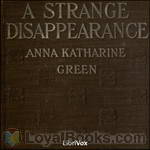 A Strange Disappearance
A Strange Disappearance
Anna Katharine Green (November 11, 1846 – April 11, 1935) was an American poet and novelist. She was one of the first writers of detective fiction in America and distinguished herself by writing well plotted, legally accurate stories (no doubt assisted by her lawyer father). | |
 The Woman in the Alcove
The Woman in the Alcove
“I was, perhaps, the plainest girl in the room that night. I was also the happiest—up to one o’clock. Then my whole world crumbled, or, at least, suffered an eclipse. Why and how, I am about to relate.” Thus begins this mystery told by Anna Katharine Green, one of the first writers of detective fiction in America and renowned for writing well plotted, legally accurate stories. | |
 X Y Z - A Detective Story
X Y Z - A Detective Story
"Sometimes in the course of his experience, a detective, while engaged in ferreting out the mystery of one crime, runs inadvertently upon the clue to another. But rarely has this been done in a manner more unexpected or with attendant circumstances of greater interest than in the instance I am now about to relate.For some time the penetration of certain Washington officials had been baffled by the clever devices of a gang of counterfeiters who had inundated the western portion of Massachusetts with spurious Treasury notes... | |
 The Millionaire Baby
The Millionaire Baby
A reward of five thousand dollars is offered, by Phil Ocumpaugh, to whoever will give such information as will lead to the recovery, alive or dead, of his six-year-old daughter, Gwendolen, missing since the afternoon of August the 16th, from her home in New York. (Quote from the book) | |
 Three Thousand Dollars
Three Thousand Dollars
This short story by Anna Katharine Green revolves around a plot to steal some goods secured safely within an impenetrable vault within the confines of Mr. Stoughton's business concern. Nobody seems to have any clue as to how the vault can be accessed, and yet access is gained once a day by person or persons unknown, by a means not known to anyone, apparently Mr. Stoughton himself included! Every clerk in the office is suspect, as the devious plot to plunder the vault's contents unfolds. (Introduction by Roger Melin) | |
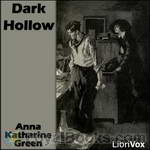 Dark Hollow
Dark Hollow
The small town of Shelby is shaken by a brutal murder. A man by the name of Etheridge was found beaten to death. A local inn-keeper, is convicted and executed for the crime. Many years later, "a woman in purple" shows up at the house of Ostrander, the respected judge who had sentenced the inn-keeper to be executed. This mysterious woman turns out to be the wife of the convicted man, but she does not believe he was guilty. She visits the Judge, to challenge him on his verdict. He listens to her plea, but reaffirms his belief in her husbands guilt... | |
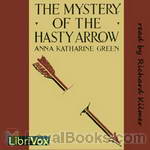 The Mystery of the Hasty Arrow
The Mystery of the Hasty Arrow
It is the noon hour at a museum in New York City. The date: May 23, 1913. The weekday, attendance is light; the attendees are scattered between two floors. Suddenly a cry rings out from the second floor. Scrambling to Section II, the museum director discovers a teenage girl dead with an arrow through her heart. An older woman hovers over her whispering incoherent phrases in the girl's ear and offering incomprehensible answers to the director's questions. She is the only witness to the crime, or accident, as the case may be... | |
 The Amethyst Box
The Amethyst Box
On the evening before his marriage, Sinclair loses a precious curiosity from his collection: an amethyst box, containing a tiny flask of deadly poison. He suspects that this poison is in the possession of either his betrothed or her cousin, the girl his best friend Worthington loves. Turning to Worthington for help, they try to recover the box before the poison can be administered... | |
 The Bronze Hand
The Bronze Hand
A political society secretly operates in Baltimore. When he tries to help his beautiful neighbor Miss Calhoun recover a stolen ring which might cause great unknown danger, Mr. Abbott is drawn into the midst of the conspiracy. (Introduction by Carolin) | |
 Circular Study
Circular Study
In this well-plotted, character-driven mystery, Detective Gryce receives a cryptic message calling him to the scene of a “strange” crime. He soon finds that the adjective is correct, for in a quiet brownstone house in a respectable New York City neighborhood, he finds the body of a man brutally stabbed to death, yet lovingly laid out on the floor of his study. The only apparent witnesses are a deaf and dumb butler driven mad by the event, and a caged bird that sings out a vital but puzzling clue... | |
 Forsaken Inn
Forsaken Inn
Told from the perspective of a Mrs. Truax, the owner of an inn during the time of the American and French Revolutions, "The Forsaken Inn" is a locked-room mystery that keeps readers guessing about what has happened. A young couple stays at the inn for the night, and goes on their way in the morning ... and several years later, the bride's body is found in a secret room of the inn. Yet, many people saw that bride leave with her husband. How can this be? Green tells her tale through Mrs. Truax' diary, and through letters and discussions with other characters who were friends of the young couple. An entertaining and highly recommended read. | |